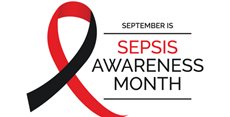Recognizing the Signs of Sepsis
 Sepsis is the body’s overwhelming and life-threatening response to an initial infection of microbes that can be bacterial, viral, or fungal. The first infection may occur any place on the body – internally or externally. Sepsis most often results from infections that start in the lungs, urinary tract, skin, or gastrointestinal tract. The initial infection may be serious, such as pneumonia or meningitis, or it may result from a minor issue, such as a finger cut or a case of the flu.
Sepsis is the body’s overwhelming and life-threatening response to an initial infection of microbes that can be bacterial, viral, or fungal. The first infection may occur any place on the body – internally or externally. Sepsis most often results from infections that start in the lungs, urinary tract, skin, or gastrointestinal tract. The initial infection may be serious, such as pneumonia or meningitis, or it may result from a minor issue, such as a finger cut or a case of the flu.
Sepsis affects 1.7 million adults in the United States and results in nearly 270,000 fatalities in the U.S. each year. Individuals who are at a higher risk of sepsis include adults ages 65 or older, people with weakened immune systems or who have chronic medical conditions such as diabetes, lung disease, cancer or kidney disease, individuals with recent severe illness or hospitalization, and sepsis survivors.
Quick diagnosis and treatment is the key to surviving sepsis. The national public awareness campaign, “It’s About TIME,” was an initiative launched in 2018 by Sepsis Alliance to educate the general public about the most common symptoms associated with sepsis and provide them with knowledge to suggest sepsis to their provider when they arrive at the emergency department.
The acronym TIME stands for:
- Temperature – higher or lower than normal
- Infection – individual may have signs and symptoms of infection
- Mental decline – patient is confused, sleepy, or difficult to rouse
- Extremely ill – severe pain or discomfort
Sepsis should be considered a medical emergency similar to a heart attack or stroke, and immediate action must be taken to treat this serious condition. Individuals who suspect that they or another person may have sepsis should seek medical care immediately.
| Posted On : 9/8/2022 1:26:47 PM